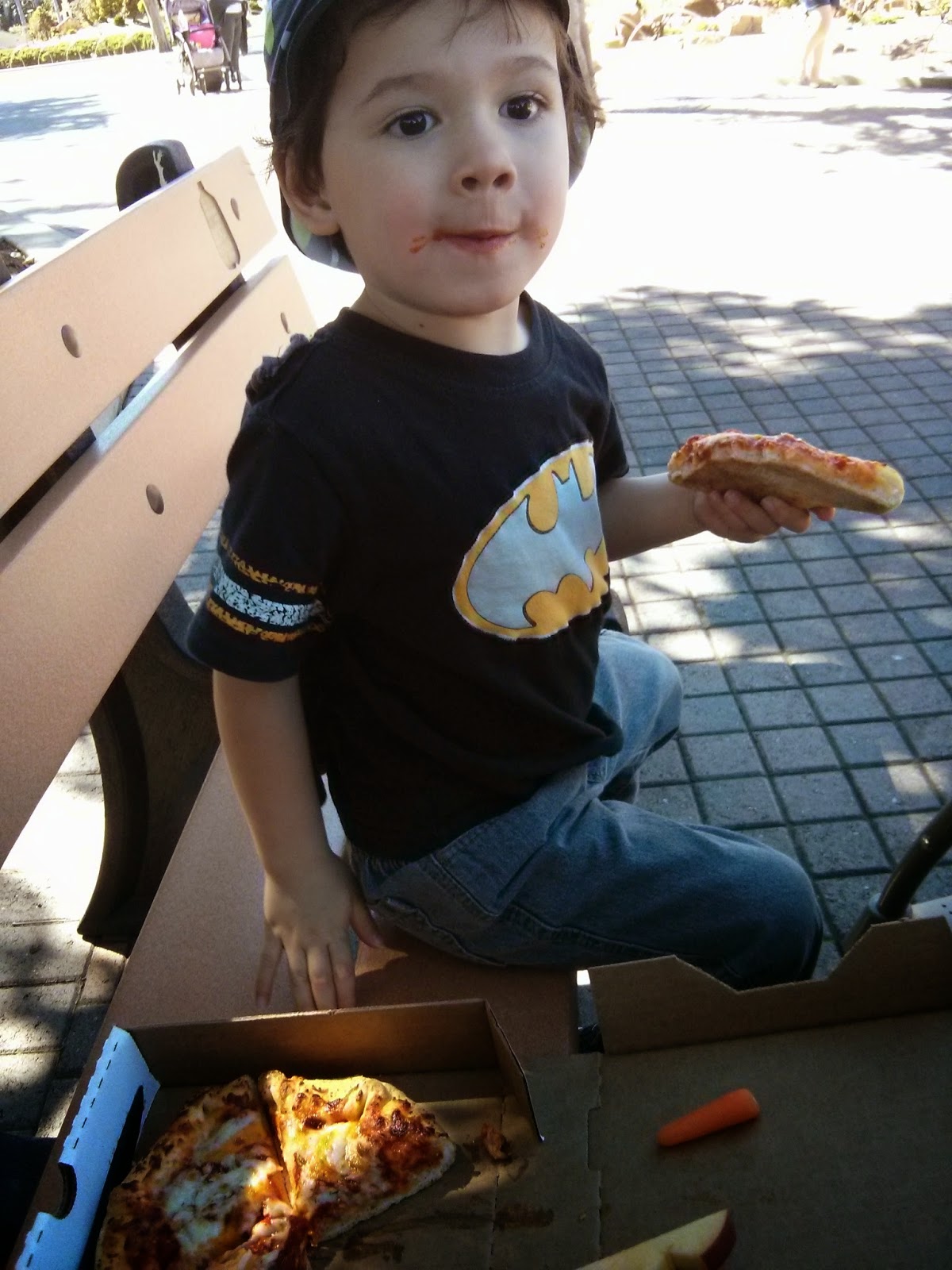I love having conversations with my four-year-old. I always learn so much.
Take Monday, for example. The boys and I went to my parents' house for an early dinner with relatives I hadn't seen in years. I rushed around helping Mom get food on the table while feeding the baby and trying to maintain a conversation with the relatives. Meanwhile, my oldest son was happily playing with his cousin.
I should have made him sit down and eat, too. But I was busy, and he was happy, and I decided to take the easy road and avoid a battle over food and loss of play time. I decided to feed him later.
Next thing I knew, he and his cousin were eating cake! I should have stopped him right then, and made him sit down and eat dinner instead. But I was busy, and he was happy, and I decided to take the easy road and avoid a battle over food and loss of play time. I decided to feed him later, at home.
I'm sure you parents out there can see exactly where this is going. If I had stopped and thought about it for two seconds I would've seen it, too. But I was enjoying the rare privilege of adult conversation, and suddenly it was almost bedtime and we still had a 20 minute drive ahead of us.
And that's when it happened.
The Meltdown.
It started when my son and his cousin decided to have a race to decide who could eat the last ring pop. (Did I mention that they'd had candy in the midst of all this, too?) Of course my son, being younger and shorter, lost.
He did not take it well.
He stood there wailing and inconsolable. I tried everything I could think of to calm him down, but he could not calm down. I could see panic in his eyes--he wanted to calm down, but didn't know how to handle the way he felt. It was seriously the worst meltdown he has ever had in his entire life.
And of course he had it in front of relatives I hadn't seen since before college. How embarrassing.
A wave of guilt tempered my frustration at his behavior as I realized that it was rooted in my earlier "easy" choices. This poor kid, who had never missed a meal in his life, had skipped dinner and loaded up on sugar. The meltdown was inevitable, as was the stomachache that quickly followed.
Duh.
I felt like such a bad mom as I tried (mostly unsuccessfully) to calm him down enough to get him out the door and in the car so I could get him home and get some real food into him.
Our conversation on the way home went something like this:
SON (sniffling): Why does my tummy hurt so bad?
ME: Because you didn't eat your dinner, so you didn't have any good food, and then you ate a lot of sugar.
SON (accusingly): Why didn't you give me dinner, Mommy?
ME: I was trying to be nice. You were having so much fun playing with your cousin. I didn't think you'd want to stop playing to eat dinner.
SON (getting more upset): But now my tummy huuuuuuurts!! Why didn't you make me eat any good food?
ME: Because it would've been harder to make you stop playing and eat. I chose what was easier. And I was wrong, I'm so sorry. I think we both learned a lesson from this.
SON (skeptical): What?
ME: I learned that the easy choice is not always the best choice. And you learned that eating too much sugar makes you feel bad.
SON (after a pause): Mommy, why didn't you make me eat dinner?
Our conversation continued along those lines even after we got home. It always came back to, "Why didn't you make me eat dinner?" I had to answer that question many times.
I hope that drilled the answer into my head, because I know I will need to remember this truth as I encounter future parenting decisions: the easy choice is not always the best choice.
For example...
It's easy to react instead of respond.
It's easy to lecture instead of listen.
It's easy to prioritize grownups over children.
It's easy to focus on behavior and miss what's going on in the heart.
It's easy to give kids what they want and not what they need.
It's easy to avoid a battle and then end up losing the war.
This should not surprise me, because parenting is not easy. But it is worth it.
Just as the best choices are usually not easy, but, as my son and I both learned last week, they are usually worth it.
I wonder what he'll teach me this week?















